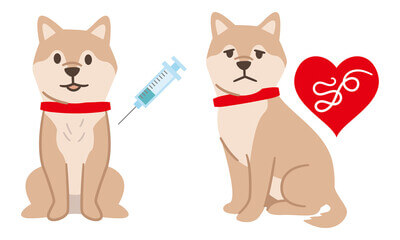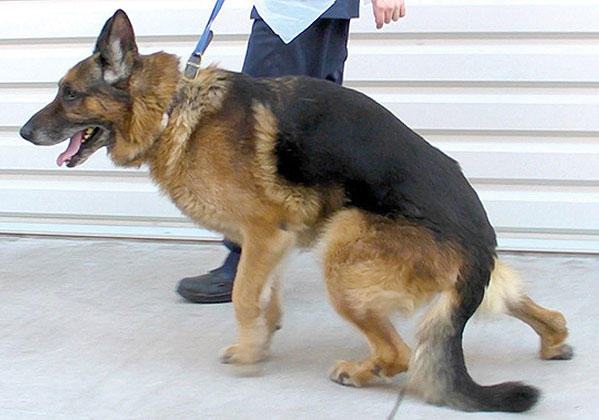Worms In Dogs: Causes, Types, Symptoms and Preventive Measures
- Causes:
Throughout their lives due to the outdoor lifestyle and social nature, most dogs will be at risk of contracting worms. Some of the most common methods of contracting worms in dogs include:
- Drinking mother’s contaminated milk during nursing
- Slipping, sniffing, eating, ingesting or licking in contaminated soil
- Consuming infected prey such as rodents, birds and reptiles
- Mosquito, flea and tick bites and ingestion
- coming into contact with an infected dog or any other infected animal
- Having or coming in contact with feces or vomit of an infected animal


- Types of Worms
The following intestinal parasites are a number of the foremost common sorts of dog worms:
- Roundworm: The most common dog worm. Roundworms in dogs are 3–5 ″ long in adulthood, and that they resemble a bit of wet spaghetti. Roundworms in dogs can be transmitted through the nursing process, feeding an infected animal, or coming into contact with infected feces of another animal.
- Tapeworms: Tapeworms in dogs have long and flat “segmented” bodies that can be up to 8 inches in length. Tapeworms in dogs occur when a dog encounters or swallows a host that is carrying a tapeworm egg, such as a bird or flea.
- Hookworm: Hookworm is the smallest common dog worms. Hookworms in dogs mainly live in the small intestine. They grow to about an inch in length and feed on blood. They can cause fatal anemia in dogs of all ages, but especially in puppies. Hookworms are passed into the feces, and can also infect other animals and people.
- Whipworms: Whipworms are long and live in the cecum and colon. Whipworms can cause severe damage to these organs, and are considered one of the most harmful dog worms in existence, but are also geographically more distinct than other dog worms.
- Heartworm: Heartworms in dogs live in the heart and pulmonary arteries. They are transmitted by infected mosquitoes, which eventually migrate throughout the body in about 6 months before coming to rest in the circulatory system. Heartworm is only spread by an infected mosquito bite, not within or between species. They are preventable and treatable, but can be fatal if not diagnosed and arrested before advanced stages of infection.
- Ringworm: Ringworm, or dermatophytis, is a skin disease caused by a fungus that results in sores and wounds on the epidermal (or outer skin) layer. Interestingly, shingles are not caused by any worms, but by infection of dead layers of skin, hair and nails. Ringworm is curable, but treatment can take time and therefore the condition are often very uncomfortable.
Of all these common types of dog worms, veterinarians of the two varieties see and treat roundworms in dogs and tapeworms most frequently in dogs.
What are the signs of a dog having worms?
It is important for dog owners to be on the lookout for signs of worms, as by the time your dog friend shows signs of infestation, he or she is already well into the process. Some of the foremost common symptoms of worms in dogs are:
- Weight loss with a significant increase or decrease in appetite
- Enlarged stomach, or ‘pot-bellied’ appearance
- lethargy
- Vomiting
- Diarrhea
- Chronic cough
- Dulling of the coat with skin irritation / swelling and / or hair loss
- Rubbing or dragging the headquarters across the ground
- Visible presence of tapeworm segments in dogs with skin and fur surrounding the anus / hind quarter area
- The presence of roundworms in dogs in infected feces, such as small rice grains.
Can worms be passed from dog to human?
Certain types of worms in dogs, such as roundworms, are very dangerous to humans, especially children who play in areas where raccoons, dogs and cats often come. Sandboxes and other dirt and sand-covered outdoor play areas regularly serve as temporary litter boxes for animals infected with dog worms and many other intestinal parasites. In fact, about 10,000 children are infected with parasitic worms every year, and in severe cases, conditions including blindness can occur. However, we will now discuss several effective precautionary measures to help keep you and your family free of worms in dogs.
Preventive measures
Fortunately, various preventive measures can be taken to help ensure that your humans, dogs and other assorted members of the family remain at low risk for contracting and spreading dog worms. Some preventive measures to scale back the danger of worms in dogs include:
- Initial treatment given to all puppies starting at 2 and 4 weeks of age
- Treating lactating females with their litter if worms in dogs were not detected in previous stool examination
- Monthly dog worms preventive medicine given throughout the year as stated by your veterinarian
- Detection and intervention as anthelmintic for dogs
- Clean the backyard stool from time to time, at least 2-3 times per week
- In public parks, playgrounds and dog parks, dispose of feces immediately with sanitary gloves and sealable bags
- To emphasize hygiene and hygienic conditions in the home, including limiting internal exposure to contaminated soil, feces and / or host animals
- To emphasize hygiene in public and especially with children by limiting or avoiding contact with potentially contaminated objects, places, animals, or people.
Popular Blog





